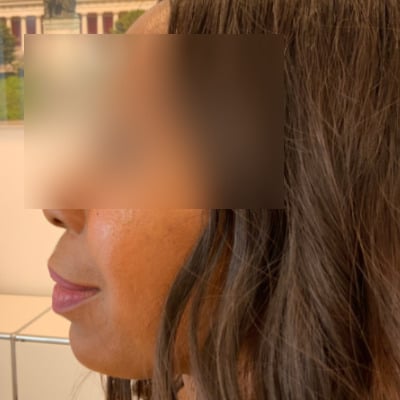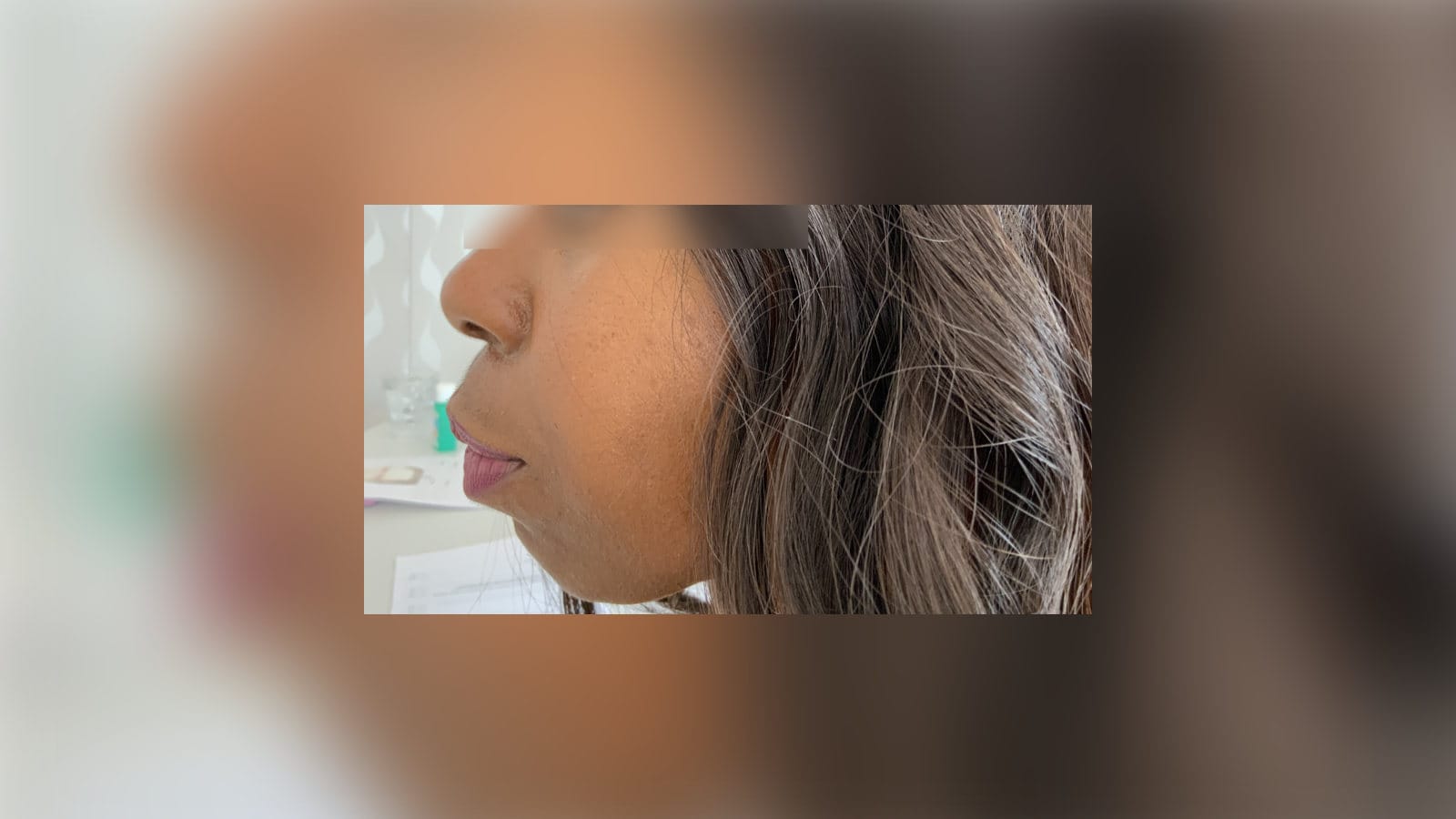Chin Augmentation With Hyaluronic Acid
A common facial misalignment that has a visually disadvantageous effect is a “receding chin.” A receding chin occurs when, in profile, the chin is noticeably behind the forehead and lips along a vertical line. Visually, it gives the impression that the face is sliding backward. When viewed from the front, a receding chin takes away much of the youthful dynamic of the face: it lacks the lower point of the “V” shape. Additionally, it exposes fat pads located under the chin. A receding chin automatically adds age to the face. The face resembles an “O,” which is typical for aging. In colloquial terms, it is often referred to as a “bird face.”
In the past, correcting a receding chin required a visit to the surgeon. However, nowadays, often, a receding chin can be effectively and significantly less risky corrected with hyaluronic acid fillers. In this blog article, I will explain how.
These are the topics:

Correction of A receding chin with dermal filler
A receding chin is usually congenital, but it can also result from injuries. Some rare genetic disorders, such as mandibular retrognathia, are associated with a receding chin. Mandibular retrognathia is a genetically determined malformation of the lower jaw, where the lower jaw is shortened and overgrown by the upper jaw. This is visually manifested as a receding chin and protruding upper lip.
A receding chin typically develops as part of the aging process. The breakdown of bones and the reduction of bone density contribute to the shortening of the chin, gradually becoming visible as a receding chin. Additionally, the soft tissue envelope shrinks. Around the chin, these depressions become visible due to muscular tension on the skin, often appearing as dents along the jawline. Furthermore, there is a perceived “sagging” effect, which is not very flattering.
Chin augmentation
Chin correction with hyaluronic acid is considered the treatment of choice today. Hyaluronic acid fills in the sunken areas and smoothes out the dents, significantly reducing the sagging appearance. With hyaluronic acid, a receding chin can even be completely reshaped. Specifically, a special, highly stable form of hyaluronic acid is directly injected onto the bone. This lifts the tissue and causes the chin to “grow” forward. If desired, the chin can also be lengthened downward by varying the injection technique.
Chin augmentation with hyaluronic acid provides a completely natural appearance. In addition, in one session, age-related marionette lines can also be smoothed out, further enhancing the impression of a rejuvenated face.
How long does the effect last?
For the latest generation of fillers designed for chin modeling, the effect typically lasts between 9 and 18 months on average. Thereafter, a touch-up injection is required. This does not necessarily mean that the entire treatment needs to be repeated. Furthermore, It is possible that only specific areas where hyaluronic acid has been naturally broken down by the body need to be replenished. The rate at which the body breaks down the injected hyaluronic acid varies from person to person and cannot be precisely predicted. For many people, the effect can last a full 18 months, while for others, it may only last 6 months. In studies conducted with the product Volux, which I use, 62% of patients still rated the results as positive even after 18 months.
The Treatment Process
Treatment begins with cleaning and disinfection of the chin. This is followed by injecting a local anesthetic into the treatment area. After a short exposure time, the injection with dermal filler begins.
There are now special fillers for the chin area, with which even large amounts of hyaluronic acid can be modelled well into desired shapes and forms. I usually use the new filler “Juvederm Volux”.
In my experience, it is particularly stable and achieves a long-lasting effect. Because of its premium qualities, it is also commanding a higher price than other HA-fillers.
The treatment lasts about an hour, including consultation. The pure filler injection about 20 minutes. If desired, a “cobblestone chin” can be injected with Botox in the same session. Often, however, this is no longer necessary after the chin has been augmented with dermal filler.
Risks and side effects
After the anesthesia wears off, the chin may be significantly more pain-sensitive than normal for 1–2 days. As with any hyaluronic acid injection, palpable nodules may form. They can frequently be massaged away.
Likewise, when treating with dermal filler, it is always possible that allergic reactions follow. And often only after several months. As a first measure, it is then recommended to take anti-inflammatory drugs (e.g., ibuprofen). If no improvement can be achieved with this, then the injected hyaluronic acid should be dissolved with Hylase. The complaints then typically disappear within a few days.
A rare, but dangerous complication of all hyaluronic injections is accidental puncturing of a major blood vessel. And as a result, the undersupply of blood to a facial region, which may develop into necrosis. In such cases, only immediate dissolution of the injected hyaluronic acid with Hylase will help.
How much does a chin augmentation cost?
A receding chin typically requires between 3 and 4ml of dermal filler. In my practice in Munich, the costs of such an augmentation thus amount to 1000-€1500. This is an indication only, actual treatment costs are charged according to the rules of the German Medical Fee Schedule (GOÄ).

